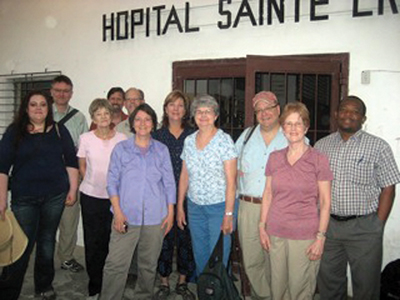
Haiti, a country of only 10 million people, is often in the
news, but rarely for anything good. This small nation, which shares
the Caribbean island of Hispaniola with the Dominican Republic, was
the first black-led republic and the first independent Caribbean
state when it gained freedom from France in the early 19th
century.
Haiti, a country of only 10 million people, is often in the news, but rarely for anything good. This small nation, which shares the Caribbean island of Hispaniola with the Dominican Republic, was the first black-led republic and the first independent Caribbean state when it gained freedom from France in the early 19th century.
Since then, environmental degradation (the cutting of nearly all its forests), political violence and government corruption have made it the poorest nation in the Americas. Tsunamis, hurricanes, floods and tropical storms have regularly brought destruction.
In 2010, a massive earthquake destroyed much of its capital, Port-au-Prince, killing tens of thousands of people; a recent cholera outbreak killed at least 2,500 more.
Perhaps a million Haitians are now homeless, and with the Haitian government barely functioning, volunteers from around the world have been attempting to ease the peoples’ suffering.
In March, Karen Cooke, wife of the rector of Morgan Hill’s St. John the Divine Episcopal Church, spent a week in Haiti as part of a medical mission sponsored by two U.S. parishes in partnership with two parishes of the Episcopal Diocese of Haiti (Eglise Episcopale d’Haïti). In April, as part of a Lenten program, she presented a report about her activities to the Morgan Hill congregation.
Ten American volunteers from various locations, including two physicians, a registered nurse and nonmedical professionals, arrived in Port-au-Prince, bringing more than 1,000 pounds of medical supplies for distribution. Four suitcases weighing 50 pounds each were filled with vitamins donated by members of St. John.
The volunteers spent the first two days preparing medications at St. Croix Hospital Guest House in Leogane, where they were housed. Before the first patient could be seen, they had to count, measure, cut and label tens of thousands of pills. Each dose was put in a bag, and labels were prepared with simplified instructions so patients would be able to follow them.
The following day, they set out to treat people who had no access to medical care, and were joined by a Haitian physician, dentist, four nursing students and four interpreters. At the Parish of St. Philippe and St. Jacques in Gressier, they held a daylong clinic for some 200 patients. After health professionals diagnosed patients and sent them to a tent serving as a pharmacy dispensary, they were given bags containing vitamins and the prescribed medications in proper dosages. It will be another six months before the team returns to hold another clinic.
The following two days were spent at St. Joseph, a more remote parish with no electricity, in Jasmine. Patients walked up to two-and-a-half hours to reach the clinic for treatment. A total of 600 patients were seen. Among the more common problems treated were respiratory and gastric issues, high blood pressure and diabetes. Reading and used eyeglasses were distributed to those suffering from vision problems.
The volunteers spent the next day interacting with 300 preschool to sixth grade students at St. Joseph’s and St. Philippe/St. Jacques schools. Leftover vitamins were given to the schools for future use.
The experience had a profound effect on Cooke’s feelings for the residents of this troubled nation. Her presentation ended with photos that represented the challenges – and progress – she witnessed:
– Tent cities for the homeless pitched on vacant lots and road medians.
– A tent city housing the homeless on the campus of the nursing school in Leogane.
– Heaps of trash and debris due to the lack of a proper disposal system.
– Open drainage ditches.
– New schools formed and reformed from empty shipping containers.
– Beautiful beaches covered with litter.
– Deforested hillsides.
– Bags of cooking charcoal made from the island’s vanishing trees.
– A visit with a voodoo priest showing his altar.
– A “rara celebration” in the street that awakened the visitors at 2 a.m.
– A Dixieland-style funeral procession.
– Motorcycles carrying three, four and five passengers each.
– Men and women dressed in their finest clothing waiting in lines for medical care.
– Children smiling, laughing and playing.
– Gradual rebuilding of homes and other buildings.
For more information about this medical mission, contact Karen Cooke at ka********@***il.com. She will be glad to share stories of “people wanting to be independent, but still desperately in need of the outside world’s help. Yet, in the scheme of things, they are so easily forgotten.”









